Pump Pad Procedure
Welcome to Luxe Foot Surgery in Miami, where we introduce you to the Pump Pad Procedure. Walking in heels is stylish and fun, but it can often cause pain in the balls of the feet. This pain happens because of something called fat pad atrophy, which means the cushiony fat in the feet gets worn out over time.
The Pump Pad Procedure is here to help! It’s a simple treatment where a doctor injects a special material into the sore area. This helps the body to make new, natural cushioning in the feet.
In this article, we’re going to talk about how the Pump Pad Procedure works, what’s good about it, how much it costs, and how to take care of your feet afterward. Let’s get you back to enjoying your heels without the pain!
- Updated on: January 16, 2024
AVERAGE COST
$1,500
PROCEDURE TIME
20 – 40 Min
BACK TO WORK
1 week
FULL RECOVERY
1 weeks
Book Your Free Consultation
Understanding Fat Pad Atrophy
Fat pad atrophy is a condition that often flies under the radar, but its effects on quality of life can be significant. To fully understand this condition, it’s necessary to delve into the anatomy of the foot.
Your foot, specifically the heel and ball, is naturally equipped with fat pads. These pads act as cushioning, absorbing the impact and stress your foot undergoes every time you take a step, jump, or even stand. In essence, they’re your foot’s shock absorbers, protecting your bones, ligaments, and tendons from direct impact with the ground.
However, due to various factors such as age, certain diseases, wearing high heels, or even just regular, everyday use, these fat pads can start to wear thin or shift position, causing them to lose their shock-absorbing abilities. This process is known as fat pad atrophy.
Symptoms of Fat Pad Atrophy
When fat pad atrophy happens, your feet might hurt or feel uncomfortable. It may feel like you’re walking on pebbles or a hard surface. Some people might even have trouble balancing.
The good news is we have treatments to help with fat pad atrophy. One of them is the Pump Pad Procedure. This treatment can help restore the lost cushioning in your feet and make walking comfortable again. We’ll be diving into this procedure in more detail in this article.
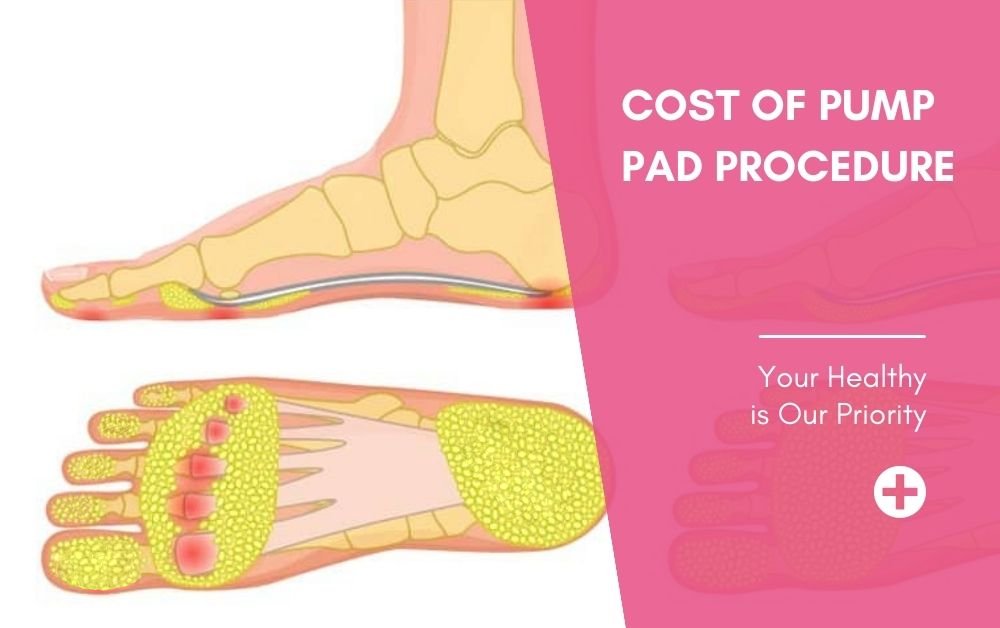
Cost of Pump Pad Procedure
The Pump Pad Procedure typically costs between $500 for a single treatment to as high as $5000 for more complex cases, depending on the severity of your fat pad atrophy. While the price range is wide, understanding what influences these costs can help you anticipate the potential expenses.
What Factors into the Cost?
Severity of Condition: The extent of your fat pad atrophy determines the number of required treatment sessions, which can affect the total cost.
Geographic Location: Costs can also fluctuate based on where you receive the procedure. Certain cities or regions might have higher pricing due to increased costs of living or operational expenses.
Healthcare Provider: The professional fees of the healthcare provider performing the procedure can also influence the overall cost.
Insurance Coverage: Be sure to consult with your health insurance provider. Some insurance plans may cover part of the cost of the procedure, reducing your out-of-pocket expenses.
The Pump Pad Procedure: A Solution to Fat Pad Atrophy
The Pump Pad Procedure is a specialized treatment designed to address the discomfort caused by fat pad atrophy. It aims to restore the natural cushioning in your feet, helping you reclaim your comfort and mobility.
How Does It Work?
The procedure involves the injection of an allograft – a transplant material – into the area of the foot that’s been affected by atrophy. This allograft serves as a matrix, or a foundation, that encourages your body to naturally produce collagen and reform the fat pad. It’s like giving your body the building blocks it needs to reconstruct the lost cushions.
What Can You Expect During the Procedure?
Performed by a trained podiatrist, the Pump Pad Procedure is generally quick and minimally invasive. It’s often carried out on an outpatient basis, meaning you won’t need to stay in the hospital overnight. Pain relief measures are used during the procedure to ensure your comfort.
Recovering from the Pump Pad Procedure
After undergoing the Pump Pad Procedure, the focus shifts to recovery and healing. Although each patient’s experience may vary, here are some general expectations and tips to keep in mind.
Initial Days Post-Procedure: You might experience some minor discomfort, swelling, or bruising in the treated area immediately following the procedure. This is a normal part of the healing process and should subside within a few days.
Activity Levels: For the first few days, it’s recommended to rest and avoid intense physical activity, especially activities that put excessive pressure on your feet. Over time, as your feet heal, you can gradually reintroduce regular activities under the guidance of your healthcare provider.
Follow-up Appointments: You’ll likely have follow-up appointments with your podiatrist to monitor your recovery process. These visits allow your healthcare provider to ensure the procedure’s success and address any concerns you may have.
Seeing Improvements: Recovery times can vary, but generally, patients can expect to see improvements in comfort and a reduction in pain over the weeks following the procedure. As your body naturally rebuilds the fat pad, you should find it easier to engage in daily activities that were previously causing discomfort.
Long-term Care: Long-term success of the Pump Pad Procedure also depends on proper foot care and wearing appropriate footwear. Avoiding high heels or shoes that put excessive pressure on the balls of your feet can help maintain the health of your fat pads.
It’s important to note that while the Pump Pad Procedure can provide relief, every individual’s experience with recovery can differ. Always follow the specific advice and instructions given by your healthcare provider to ensure the best outcome.
Frequently Asked Questions about the Pump Pad Procedure
In this section, we’ll cover some of the most common questions that we receive about the Pump Pad Procedure.
There are several high-quality shoe inserts available that can provide relief for fat pad atrophy. These inserts are designed to provide cushioning and support to the balls of the feet, relieving pressure and distributing weight evenly across the foot. Here are a few recommended options:
Pedag Drop Metatarsal Arch Pads: These inserts are designed to support the metatarsal arch, reducing the pressure on the balls of your feet.
Dr. Scholl’s Pain Relief Orthotics for Ball of Foot Pain: These are easily available over-the-counter and are designed specifically to relieve discomfort in the ball of the foot.
Powerstep Pinnacle Maxx Orthotic Insole: Offering a full-length design, these insoles provide comprehensive support for the entire foot.
Superfeet Green Insoles: Known for their high arch support, these insoles can help distribute pressure away from the balls of your feet.
Fat pad atrophy in the ball of the foot can present with several signs and symptoms, including:
Pain and Discomfort: This is often the most noticeable symptom. It usually feels like a persistent ache or burning sensation in the ball of the foot, particularly when standing, walking, or wearing high-heeled shoes.
Feeling of Walking on Pebbles: Some people describe a feeling as though they are walking on pebbles or have a stone in their shoe. This sensation is due to the thinning of the fat pad which leaves the metatarsal bones less protected.
Visible Changes: In some cases, there might be visible signs such as calluses or thickened skin on the ball of the foot, indicating that the area is experiencing extra pressure.
Reduced Mobility: If the discomfort becomes severe, it may limit your ability to participate in regular activities or exercise that involve standing or walking.
Changes in Foot Shape: In advanced cases, you might notice changes in the shape of your foot, especially a “dropped” metatarsal head or increased visibility of the toe bones.
If you’re experiencing any of these symptoms, it’s important to consult with a healthcare provider or a podiatrist for a proper diagnosis and treatment plan.
Both fat pad atrophy and plantar fasciitis can cause foot pain and discomfort, but they are fundamentally different conditions with different causes.
Fat Pad Atrophy involves the thinning or loss of the natural fat pads on the balls or heels of the feet. This condition is often associated with aging, but can also result from high-impact activities, injury, or certain systemic diseases like diabetes or rheumatoid arthritis. Symptoms often include feeling as though you’re walking on pebbles or experiencing a burning sensation in the ball of the foot.
Plantar Fasciitis, on the other hand, is inflammation of the plantar fascia, a thick band of tissue that runs across the bottom of your foot, connecting your heel bone to your toes. This condition is common among runners and those who are overweight, and is often characterized by sharp, stabbing pain near the heel, particularly with the first steps in the morning or after sitting for a long period.
In terms of treatment, fat pad atrophy might be addressed by shoe modifications, inserts, padding, or, in more severe cases, surgical intervention like the Pump Pad Procedure. Plantar fasciitis treatments can range from rest, stretching, and over-the-counter pain relievers to physical therapy or corticosteroid injections.
If you’re experiencing persistent foot pain, it’s crucial to get a proper diagnosis from a healthcare provider to ensure you’re receiving the appropriate treatment.
Running with fat pad atrophy can present challenges and potentially exacerbate discomfort in the balls of your feet. However, every individual’s experience may vary. It’s important to listen to your body and consult with a healthcare professional or a podiatrist before making any decisions regarding your running routine.
Consider the following tips if you choose to continue running with fat pad atrophy:
Proper Footwear: Ensure you have well-fitting running shoes with good cushioning and support. Look for shoes that provide extra cushioning in the ball of the foot area. You can find recommendations for the best shoes for fat pad atrophy in our article on Best Shoes for Fat Pad Atrophy.
Orthotic Inserts: Consider using orthotic inserts or custom-made insoles designed to provide additional cushioning and support to the fat pad area. These can help absorb shock and reduce discomfort during running.
Gradual Progression: Start with shorter distances and gradually increase your running time or mileage. Give your feet time to adjust and monitor any increase in pain or discomfort.
Surface Selection: Opt for running on softer surfaces like grass, trails, or tracks, which can help reduce the impact on your feet compared to running on concrete or asphalt.
Listen to Your Body: Pay attention to any pain or discomfort during or after running. If you experience increased pain or the symptoms worsen, it may be necessary to modify or take a break from running until you’ve consulted with a healthcare professional.
Remember, the information provided is not a substitute for professional medical advice. A healthcare provider can evaluate your specific condition and provide personalized recommendations to ensure your safety and well-being while running with fat pad atrophy.
Calcaneal fat pad atrophy refers to the thinning or degeneration of the fat pad located in the heel area of the foot. This condition can lead to discomfort, pain, and reduced shock absorption in the heel.
Symptoms of Calcaneal Fat Pad Atrophy:
- Heel pain, especially when walking or standing for prolonged periods.
- A feeling of walking on hard surfaces without proper cushioning.
- Increased sensitivity or tenderness in the heel area.
- Painful sensations while wearing shoes, especially those lacking adequate cushioning or support.
Causes of Calcaneal Fat Pad Atrophy:
Several factors contribute to the development of calcaneal fat pad atrophy, including:
- Aging: As we age, the fat pads naturally lose volume and cushioning ability.
- Excessive pressure: Prolonged standing, walking on hard surfaces, or wearing ill-fitting shoes can accelerate fat pad degeneration.
- Certain medical conditions: Conditions like obesity, diabetes, and rheumatoid arthritis may increase the risk of fat pad atrophy.
Managing Calcaneal Fat Pad Atrophy:
While complete reversal of fat pad atrophy may not be possible, there are ways to manage the symptoms and improve comfort:
- Proper footwear: Opt for well-cushioned, supportive shoes that provide adequate shock absorption, especially in the heel area.
- Orthotic inserts: Consider using cushioned inserts or heel pads to provide additional support and cushioning for the heel.
- Heel cushions: Gel or silicone heel cushions can help distribute pressure and alleviate discomfort.
- Avoid high-impact activities: Minimize activities that put excessive strain on the heels, such as running or jumping.
- Weight management: Maintaining a healthy weight can reduce pressure on the heels and minimize fat pad degeneration.
- Consult a healthcare professional: If symptoms persist or worsen, consult a podiatrist or healthcare provider for a comprehensive evaluation and personalized treatment recommendations.
Remember, early intervention and proper care can help manage symptoms and improve overall comfort.
Latest Articles
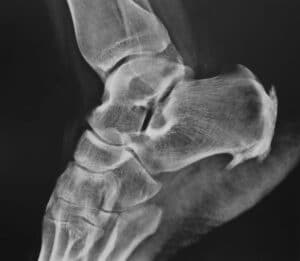
The Breakdown of Haglund’s Deformity Surgery Cost
Haglund’s deformity is a bony protrusion on the back of the heel. This podiatric condition is a result of calcaneus
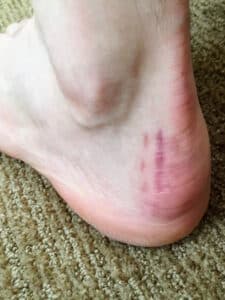
What to Expect – Haglund’s Deformity Surgery Scar
Haglund’s deformity or syndrome is a protrusion on the back of the heel caused by an enlargement of the calcaneal
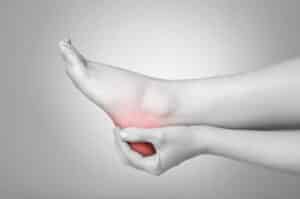
How Long Does Haglund’s Deformity Surgery Tak
Haglund’s deformity, also known as Mulholland deformity, is a bone and soft tissue abnormality on a person’s heel. It causes
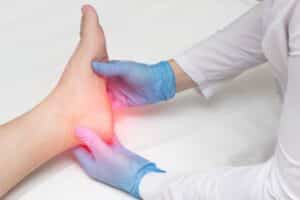
Managing Pain After Haglund’s Deformity Surgery – What to Expect and Tips for Relief
Make the recovery phase after Haglund’s deformity surgery a breeze. Learn tips and tricks for managing pain after Haglund’s deformity
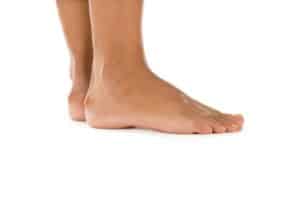
What to Expect After Haglund’s Deformity Surgery
When Haglund’s deformity proves to be resistant to all non-surgical remedies, such as changing footwear, anti-inflammatory drugs, and physiotherapy, surgical
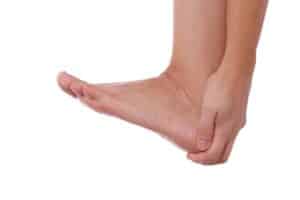
Can Haglund’s Deformity Recur After Surgery? Understanding the Possibilities
When it comes to some of the most stubborn health issues, foot conditions are at the top of the list.
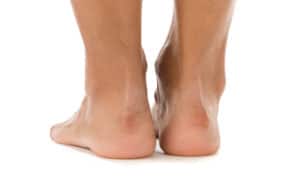
Haglund’s Deformity Post Surgery: A Comprehensive Guide
Each surgical procedure has a unique recovery period, no matter how minimally invasive it is. There will be certain things
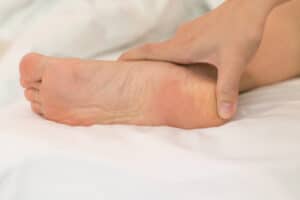
What Are the Main Haglund’s Deformity Surgery Risks? An In-Depth Overview
As with any other medical procedure, Haglund’s deformity surgery comes with its own set of risks and potential complications. Before
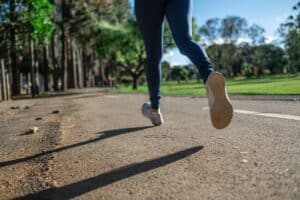
Returning to Running After Haglund’s Deformity Surgery – A Guided Journal
When can you return to running after Haglund’s deformity surgery? Physical therapy and a smooth recovery process impact how soon
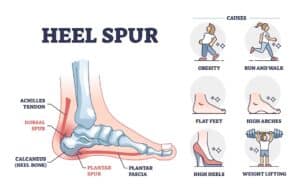
Dorsal Heel Spur Surgery – Procedure, Recovery, and What to Expect
Dorsal heel spur surgery is a procedure that alleviates irritating symptoms caused by heel spurs that develop on the back
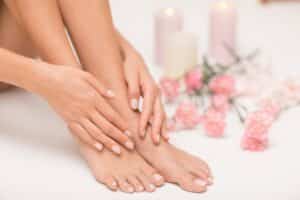
Understanding the Costs of Laser Corn Removal
Alleviating discomfort and nagging pain caused by corns on the patient’s feet has never been easier to do. Removing painful
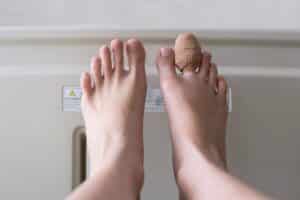
Minimally Invasive Hammertoe Surgery Cost – An Informative Guide
Do you need pain relief from a bent toe joint? Fortunately for many patients, there is a minimally invasive surgery